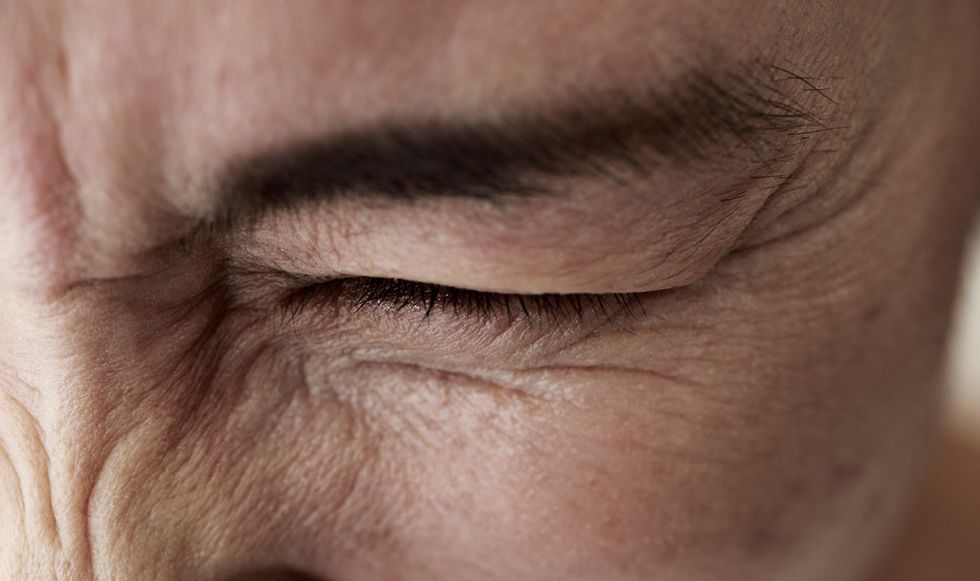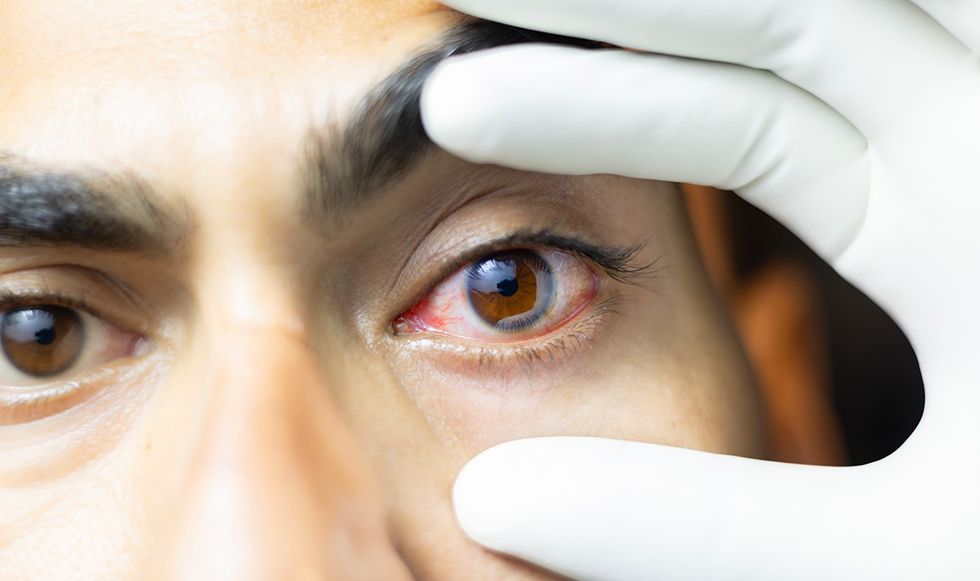What having a red eye in a photo really says about your health: Surprising truth behind the eerie phenomenon
Red eyes can signal the retinas of both eyes are unobstructed and healthy, eye experts say
Red eyes may look menacing but they can actually be a sign of good health, doctors say
Don't Miss
Most Read
Trending on GB News
Red eyes may ruin photos but they offer a positive snapshot of your health, experts say.
That's because cameras catch what's happening behind the scenes.
The flash lights up the inside of your eyes and captures the red blood vessels.
As the American Academy of Ophthalmology explains, "a red reflex happens when the flash of a camera lights up the blood-rich retina".

Persistent blurred or double vision could signal the eyes are pointing in different directions
Getty Images
The health body added: "If the eyes are looking directly at the camera lens and the colour of the reflex in both eyes is red, that's usually a good sign the retinas of both eyes are unobstructed and healthy."
Ironically, an absence of red in the eye may spell something is seriously wrong.
For instance, cases where one eye is less red than the other — medically termed asymmetrical red reflex — could signal strabismus, a disorder where the eyes point in different directions.
This effect is caused by problems with the muscles that control eyeball movement.
It's important to get act on the warning signs of strabismus as soon as possible as it could lead to further problems if left untreated, such as:
- Persistent blurred or double vision
- A lazy eye – where the brain starts to ignore signals coming from the affected eye
- Embarrassment or low self-esteem
Furthermore, purely white eyes can signal a rare type of cancer called retinoblastoma, or eye cancer.
LATEST DEVELOPMENTS

Pain in one or both eyes can signal a rare type of eye cancer
Getty Images
Retinoblastoma is a rare type of eye cancer that can affect young children. It affects the retina, which is at the back of the eye.
The main symptom is a white glow or white reflection in the centre of the eye (pupil).You may be able to see it from just looking at the eye, or you may see it in low light or in photos where a flash has been used.
Other signs include:
- The eyes pointing in a different direction (squint)
- The coloured part of the eye (iris) changing colour
- Swelling around the eye
- Uncontrolled eye movements
- Pain in one or both eyes
If Coats’ disease affects the centre of the retina (macula) or leads to total retinal detachment in the affected eye, vision in this eye can be permanently lost.
According to the NHS, Coats’ disease is much more common in males than females.
It is most commonly discovered in children before the age of 10 years, but can present in adulthood too. It is a rare condition, affecting one in 100,000 people.








